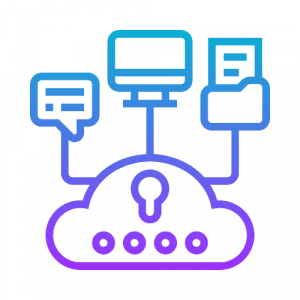Opting for HANA as a DB is a major paradigm shift in the SAP implementation life-cycle of an enterprise. It can be termed as a huge modification in the approach of running a business. Choosing HANA as a DB opens up lots of options and benefits which enhance business productivity and also improve IT efficiency. Further, having business continuity is also quite critical. Considering that investment has already been done on HANA for running your production workload, getting a DR to address the business continuity will be a huge burden on the pockets of most of the customer, due to its high hardware cost. To bridge such shortcomings, it is highly recommended to leverage a simple HANA system replication architecture and a popular public cloud service like Azure or AWS.
DR options for HANA
Below are the two most cost optimized options for setting up a DR on the cloud. Other setups are not discussed as it would be beneficial to focus only on cost-effective options.
- Lean DR options
- Leveraging Cloud Backup option
Choosing between these two options depends on your RTO/RPO Vs Budget for the DR.
Lean DR options
From the two aforementioned options, Lean DR option has a little more cost factor to it as compared to the other option but has a lesser RTO/RPO. The details of the factor governing the RTO/RPO will be discussed a bit later. In this approach, during peacetime, we configure replication between on-prem and cloud leveraging SAP HANA System Replication (HSR) with no preload option. In the no preload option data won’t be loaded in the memory, so we don’t need the DR system to match the actual production instance size. In this case, during the actual DR, the DR system needs a quick restart to bring the system to the actual on-prem configuration by leveraging the cloud scalability options, where we can increase the capacity of the system, just with a simple restart.
How this affects cost:
Having higher memory will have a cost impact on the VM, in this approach, we will configure the DR system with a lesser memory size configuration. We would require a VM having at least 64 GB RAM or a VM to the size of row store plus some additional memory as a buffer, whichever is higher. Ideally, 20 GB of additional memory is considered to be sufficient.
The RPO will be near zero depending on the bandwidth availability between on-prem and cloud, but the RTO needs to be factored in as we need to restart the system to match production configuration size. This might take time based on your row store size.
Case Study: DR for geographically diverse SAP
We helped one of the world’s largest paper, pulp, and packaging companies, a first-time cloud adaptor, to establish a unified DR site.
Leveraging Cloud Backup option:
In this option, the on-prem HANA system backup is stored in a public cloud. It is like keeping your backup in AWS S3 or Azure recovery vault which gives us the option to launch the VM at any desired location during the time of DR. Furthermore, storage in the cloud is also very cost effective apart from being secure and reliable. In this scenario, the cost is proportional to the size of your backup and the data transfer ingress.
In this approach, we can make use of two options. First, to set up the HANA instance onetime so that we save RTO to a greater extent. Once all configuration is done, we need to keep the instance in shutdown state, so that we incur cost only for the provisioned storage which would be very minimal.
The second option is to bring up the HANA system from the backup at the time of DR. The RTO/RPO will depend on the approach we follow. Also, the frequency of the log backup plays a great role in reducing the RPO and RTO.
In AWS, we need to restore the S3 backup to EBS volume. Using that we can restore the system. Whereas in Azure, we need to mount the backup disk to the system and perform the restore. The approach for restoring from the backup differs for different cloud providers.
By leveraging these approaches, one can address their business continuity for their core HANA application and enable huge cost saving. Also, an important thing to note is that, implementing this not lead to huge professional cost. From previous experiences, these approaches have helped many customers to opt for HANA DR quickly. For one of the customers, these options were able to bring down the cost by 200%.
We at 1CLoudHub bring you the best of cloud practices, frameworks and domain knowledge. Get in touch with our consultants today, and we’ll help craft the right approach for you.
Head of SAP Cloud Practice
1CloudHub



